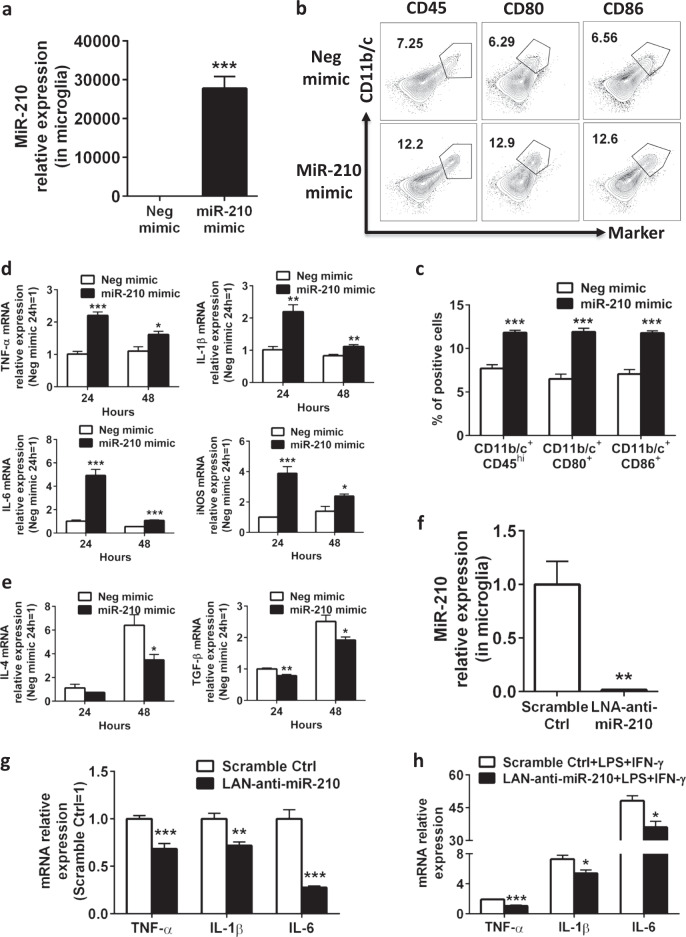Fig. 4.
MiR-210 activates neonatal rat microglia in vitro. a–e Microglia were isolated from neonatal rat primary microglia culture and treated with negative mimic or miR-210 mimic for 48 h (100 nM). Cells were collected for analysis at the indicated time points. The experiments were repeated three times, and representative results are presented. a Bar graphs showing the qPCR analysis of miR-210 expression in microglia at 24 h post transfection. Data are presented as the mean ± SEM (n = 6). b Representative FACS plots showing the staining for CD11b/c, CD45, CD80, and CD86 in microglia at 24 h post transfection. c Bar graph showing the quantification of the FACS plots presented in b. Data are presented as the mean ± SEM of triplicate cultures. d, e Bar graphs showing the RT-qPCR analysis of proinflammatory M1 markers (d) or antiinflammatory M2 markers (e) of microglia at the indicated time points post transfection. Data are presented as the mean ± SEM (n = 6). f–h Microglia were isolated from neonatal rat primary microglia culture, transfected with LNA scramble control or LNA-anti-miR-210 (100 nM), and recovered overnight (12 h) prior to being treated with or without LPS (0.5 ng/ml) and IFN-γ (0.1 ng/ml) for 12 h. Cells were collected for expression analysis. f Bar graphs showing the qPCR analysis of miR-210 expression in microglia at 24 h post transfection of miR-210 inhibitor. Data are presented as the mean ± SEM (n = 4). g, h Bar graphs showing the RT-qPCR analysis of proinflammatory cytokines (TNF-α, IL-1β, IL-6) in microglia without g or with h M1 stimulation. Data are presented as the mean ± SEM (n = 6). *P < 0.05, **P < 0.01, ***P < 0.001

